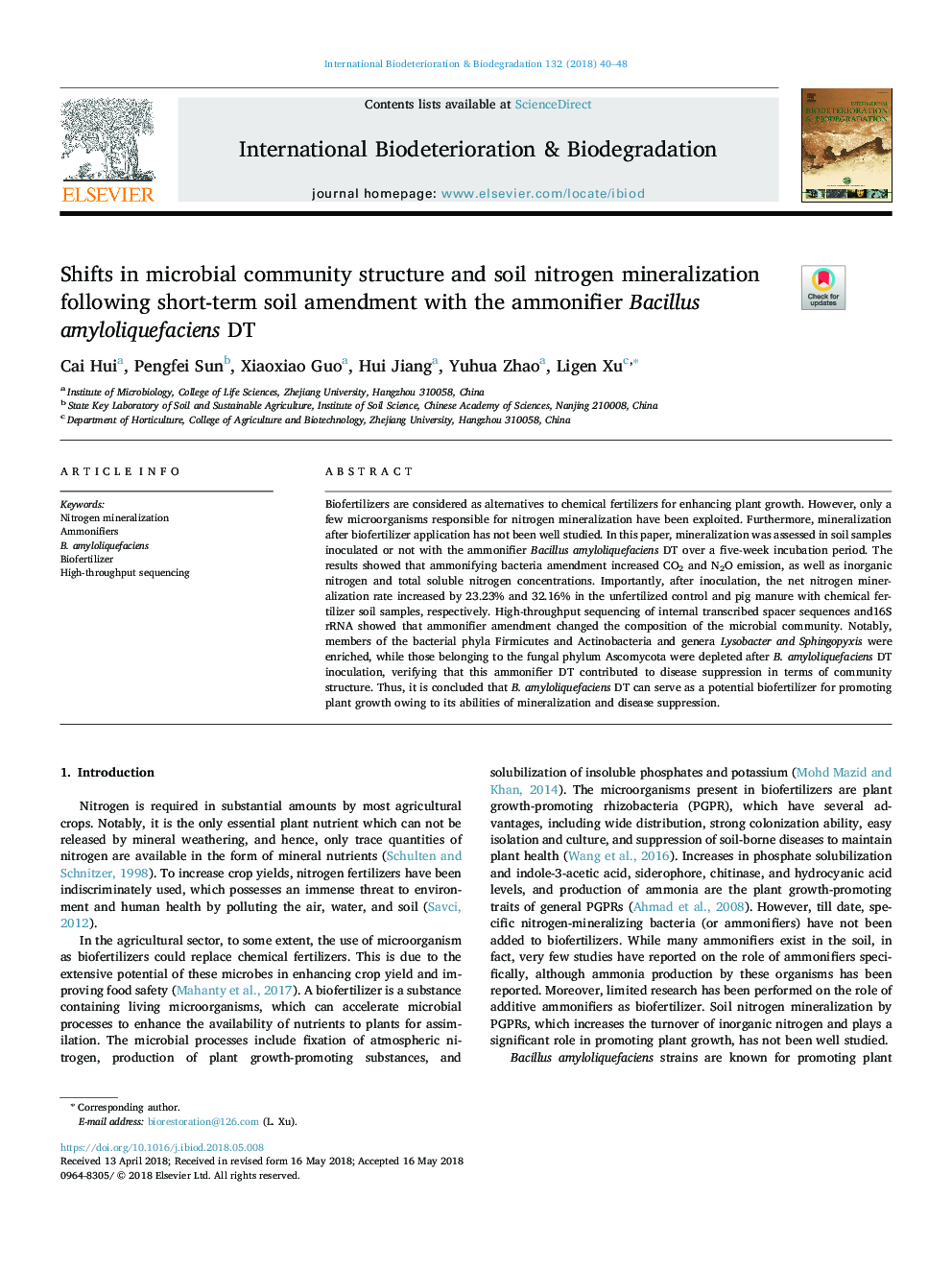| Article ID | Journal | Published Year | Pages | File Type |
|---|---|---|---|---|
| 8843729 | International Biodeterioration & Biodegradation | 2018 | 9 Pages |
Abstract
Biofertilizers are considered as alternatives to chemical fertilizers for enhancing plant growth. However, only a few microorganisms responsible for nitrogen mineralization have been exploited. Furthermore, mineralization after biofertilizer application has not been well studied. In this paper, mineralization was assessed in soil samples inoculated or not with the ammonifier Bacillus amyloliquefaciens DT over a five-week incubation period. The results showed that ammonifying bacteria amendment increased CO2 and N2O emission, as well as inorganic nitrogen and total soluble nitrogen concentrations. Importantly, after inoculation, the net nitrogen mineralization rate increased by 23.23% and 32.16% in the unfertilized control and pig manure with chemical fertilizer soil samples, respectively. High-throughput sequencing of internal transcribed spacer sequences and16S rRNA showed that ammonifier amendment changed the composition of the microbial community. Notably, members of the bacterial phyla Firmicutes and Actinobacteria and genera Lysobacter and Sphingopyxis were enriched, while those belonging to the fungal phylum Ascomycota were depleted after B. amyloliquefaciens DT inoculation, verifying that this ammonifier DT contributed to disease suppression in terms of community structure. Thus, it is concluded that B. amyloliquefaciens DT can serve as a potential biofertilizer for promoting plant growth owing to its abilities of mineralization and disease suppression.
Keywords
Related Topics
Life Sciences
Environmental Science
Environmental Science (General)
Authors
Cai Hui, Pengfei Sun, Xiaoxiao Guo, Hui Jiang, Yuhua Zhao, Ligen Xu,
